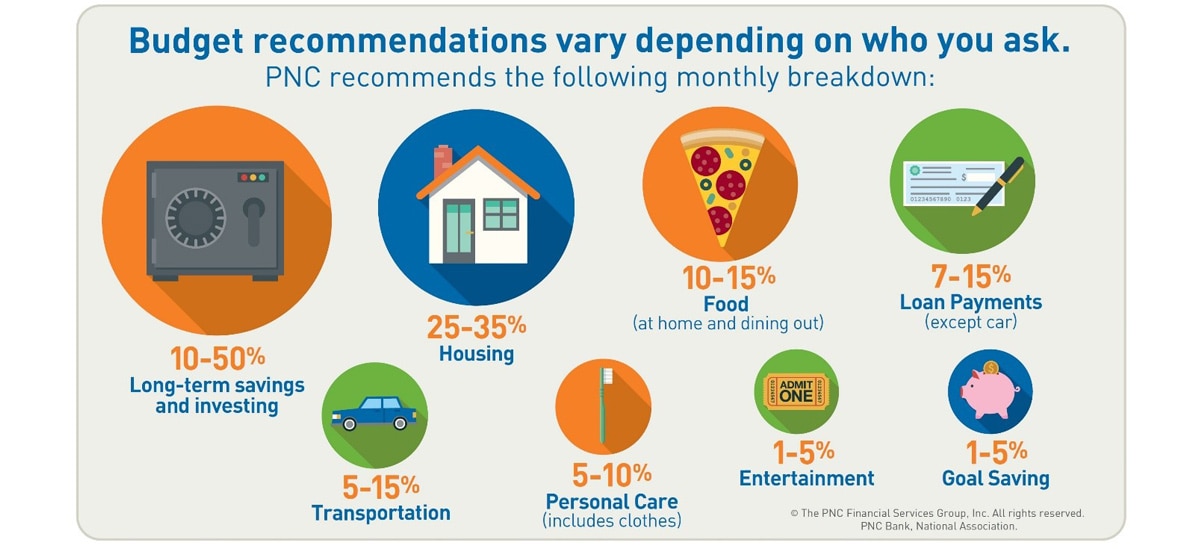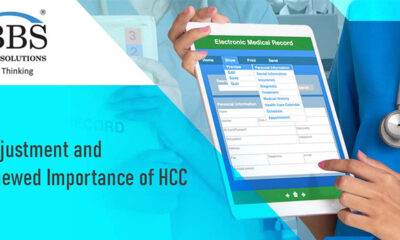TECHNOLOGY
How to Increase Your Financial Flexibility: Paycheck and Personal Budget Management Techniques

Key Takeaways:
- Understanding your pay schedule is crucial for effective budgeting.
- Technology offers innovative solutions to manage and receive your finances.
- Financial literacy and the right tools are keys to personal cash management success.
Table of Contents
- Understanding Your Pay Schedule and Its Impact on Budgeting
- Creating a Personal Budget That Aligns with Your Income
- Effective Ways to Manage Cash Flow Between Paychecks
- Optimizing Savings: Techniques to Increase Your Financial Cushion
- Dealing with Unexpected Expenses without Derailing Your Budget
- How Technology is Shaping Modern Payroll Practices
- The Role of Financial Education in Personal Cash Management
- Credit and Debt: Navigating Borrowing within Your Budget
- Making the Most of Financial Planning Tools and Resources
- Implementing Behavioral Changes for Long-Term Financial Security
Understanding Your Pay Schedule and Its Impact on Budgeting
The foundation of robust financial planning starts with understanding your pay schedule. Whether you’re paid weekly, bi-weekly, or monthly, each frequency carries implications for cash flow management and budgeting strategy. Being aware of these nuances is the first step toward achieving financial well-being. For example, by knowing when your funds are due, you could get paid early and enjoy increased flexibility in financial planning. This level of empowerment in managing payday allows for more agile and responsive financial decision-making, especially during economic uncertainty or personal fiscal strain. How you strategize your financial plan to cater to your pay schedule is also fundamental. Adapting the budget to accommodate fluctuating earnings is critical for those with variable income, such as freelancers. Additionally, establishing a buffer for slower income periods can provide stability in uncertain times. This strategy not only smooths out the rough patches but also reduces anxiety associated with unpredictable income streams, ensuring personal budgets can withstand volatility.
Creating a Personal Budget That Aligns with Your Income
Crafting a personal budget tailored to your income is vital. It involves tracking expenses, setting realistic spending limits, and identifying savings targets. Several user-friendly budgeting apps are available to simplify this process, offering powerful insights into spending habits and enabling users to maintain their financial plans effortlessly. Achieving this alignment between earnings and expenditures also demands recognizing financial goals, whether short-term, like saving for a vacation, or long-term, such as retirement planning. By aligning your budget to these goals, money management transcends the act of simply paying bills and becomes a cornerstone of future well-being.
Maintaining consistency by regularly checking in with your budget ensures you stay on top of your finances and quickly identify areas needing adjustment. Remember, a budget that isn’t adhered to can’t serve its purpose of steering you toward your economic goals. Moreover, remaining vigilant about budget adjustments fosters a proactive rather than reactive approach to personal finance, enabling individuals to anticipate and mitigate financial challenges before they become overwhelming.
Effective Ways to Manage Cash Flow Between Paychecks
Seamless cash flow management is about balancing your expenditures between paychecks. You guard against overspending and potentially straining future pay periods by prioritizing expenses. Savvy budgeters always suggest cutting unnecessary costs and seeking more affordable alternatives. Frugality coupled with resourceful planning, such as meal prepping to save on food costs or carpooling to reduce travel expenses, are just a few ways to keep cash flow in check. Managing cash flow ensures the fulfillment of immediate financial obligations and solid positioning for future fiscal goals like investments or luxury purchases.
Creating a contingency plan for unexpected income gaps, such as a side gig or a liquid savings account, can also prevent financial stress. Additionally, establishing an emergency fund is a protective buffer, guarding against the unpredictability of life’s economic demands. This emergency fund acts as a financial shock absorber, providing the peace of mind that ensures day-to-day budget adherence is not wholly derailed by an unplanned expense.
Optimizing Savings: Techniques to Increase Your Financial Cushion
Building a solid financial cushion is more about strategy than just stashing money away. Setting clear, definable savings goals grounds the process in tangible results, making it easier to commit to regular contributions. Automating savings transfers on payday ensures that part of your paycheck is saved without requiring active effort. It reinforces the savings habit and lessens the temptation to spend what you might otherwise consider disposable income. Over time, consistently diverting a portion of revenue to savings can build significant financial reserves, which could be pivotal during financial strain or for capitalizing on investment opportunities.
Savings should not be set in stone; they require reassessment and fine-tuning as your financial situation evolves. Regular review helps ensure that you’re still on track to meet your long-term objectives, making adjustments as necessary to accommodate life changes. This dynamic approach to savings recognizes the fluid nature of life’s circumstances and the need for a flexible financial strategy to adapt to them.
Dealing with Unexpected Expenses without Derailing Your Budget
When faced with sudden, unforeseen costs, it’s easy for an unprepared budget to suffer. Planning for such scenarios affords you security, knowing that these expenditures won’t throw your entire financial plan out of balance. This planning could include setting aside small amounts regularly to create a cushion specifically for unexpected bills, such as car repairs or medical emergencies. By systematically allocating funds for such expenses, you protect other aspects of your financial plan, like savings and investments, from being compromised in a crisis.
Accessing funds during a crisis can be easier with tools and accounts designed for fast liquidity. Post-crisis, it’s crucial to revisit your budget, adjust to account for the changes forced by the expense, and rebuild your emergency reserves. A proactive reassessment of your budget reaffirms your commitment to financial resilience, ensuring that the impact of unexpected costs is minimized and that your financial trajectory remains as undisturbed as possible.
How Technology is Shaping Modern Payroll Practices
Advances in payroll technology have revolutionized the way people access their earnings. For instance, getting paid early is a contemporary consideration for many employees. It provides a degree of monetary liberty, particularly when juxtaposed against traditional payment cycles. The convenience and control offered by technological solutions permittance individuals a broader array of choices in managing their finances. These developments also portend a new era in financial services, where payroll administration and receipt can be tailored to each individual’s requirements and preferences.
As we look ahead, technology will continue to play a significant role in the preferences and expectations of employees regarding payment timelines and accessibility. Tailoring financial strategies to harness these technologies will be crucial for maximizing financial health. By staying well-informed and open to adopting technological solutions for financial management, like digital wallets and online banking features, individuals and households can optimize their cash flow and remain aligned with the evolving landscape of digital finance.
The Role of Financial Education in Personal Cash Management
Financial literacy is a cornerstone of personal wealth management. Understanding key concepts such as budgeting, saving, and investing empowers individuals to make informed financial decisions. Fortunately, myriad resources are available to enhance one’s financial knowledge, from online courses to interactive budgeting tools. A solid grounding in financial principles can inform decisions about loans, investment risks, and retirement planning—each vital to long-term economic security.
Fostering financial literacy has tangible benefits in immediate financial stability and long-term wealth accumulation. An informed approach to money management can lead to more secure financial futures. When equipped with knowledge and understanding of financial mechanisms, individuals can confidently navigate the market, avoid common pitfalls, and capitalize on opportunities for growth and stability. This education is a protective barrier against the challenges of a complex financial world, setting the stage for a prosperous and secure financial journey.
Credit and Debt: Navigating Borrowing within Your Budget
Understanding the implications of borrowing and managing debt is essential in maintaining a healthy budget. Recognizing the actual cost of credit and using tools to track your borrowing helps prevent debt from spiraling out of control. Balancing debt repayment with saving habits is crucial to ensure financial health is not compromised. Conscientious of interest rates and repayment terms and prioritizing high-interest debt can preserve credit ratings and reduce financial stress. It also imparts a sense of financial discipline that can benefit decisions about spending and saving throughout one’s life.
One can redirect finances towards more beneficial saving efforts by identifying ways to consolidate or reduce high-interest debt. In this way, managing credit becomes a strategic element of your broader financial plan. Leveraging lower interest rates through consolidation loans or transferring balances to lower-rate credit cards can provide breathing room in a budget, allowing for a more aggressive savings strategy and, ultimately, a stable and robust financial structure.
Making the Most of Financial Planning Tools and Resources
Today, a wealth of financial planning tools and resources exists to guide individuals toward successful budget management. From sophisticated budgeting software to investment tracking apps, the digital age has provided tools to suit any financial need or preference. Utilizing these tools can streamline the financial planning process, turning what might otherwise be a daunting task into a manageable routine. Technology aids in demystifying financial jargon and concepts, rendering them accessible and actionable for the regular user.
Understanding the difference between free and paid options and when to seek professional financial advice—highlighted by resources—is vital in making informed choices that align with your financial goals and resources. It’s pertinent to evaluate the additional features and benefits paid tools critically offer and assess whether they justify the expense. Meanwhile, seeking professional advice can provide personalized insights that cater to unique financial situations, ensuring tailored strategies closely align with individual goals and circumstances.
Implementing Behavioral Changes for Long-Term Financial Security
Establishing a secure financial future is as much about behavioral change as it is about strategy. Viewing money management through the lens of personal habits can lead to profound changes in economic outcomes. Adapting one’s mindset towards proactive rather than reactive financial decision-making is the key. It involves delaying gratification for more significant financial rewards, consistently reviewing spending habits to eliminate excess, and maintaining the discipline to stick to a well-considered budget. Over time, these incremental changes can compound, significantly fortifying one’s financial stability and growth.
Maintaining discipline sets the foundation for sustained wealth building even when it feels challenging. With patience and persistence, these changes can become second nature, ensuring a legacy of financial security and independence for the future. The path to financial well-being often requires adjustment, resilience, and commitment to continual learning and application of sound economic practices. It’s a journey that is as rewarding as it is essential, leading to monetary wealth and a sense of confidence and peace of mind that comes with financial autonomy.
TECHNOLOGY
The Vital Role of HCC Risk Adjustment Coding in Optimizing Healthcare Outcomes

Table of Contents
- The Fundamentals of HCC Risk Adjustment Coding
- Enhancing Patient Care Through Accurate HCC Coding
- Financial Implications of HCC Coding for Healthcare Providers
- Data-Driven Decisions: How HCC Coding Influences Healthcare Strategies
- Training and Education: Equipping Coders for Excellence in HCC Coding
- Looking Ahead: The Future of HCC Coding in Healthcare Innovation
Healthcare institutions worldwide are grappling with the challenge of providing high-quality patient care while managing finances efficiently. They have turned to the Hierarchical Condition Category (HCC) risk adjustment coding methodology to tackle this hurdle. This systematic approach analyzes patients’ diagnoses and conditions to predict healthcare costs accurately. The HCC risk adjustment coding is critical in creating personalized care plans for each patient and ensuring healthcare providers receive proper reimbursement. The HCC system’s importance lies in its ability to achieve positive healthcare outcomes and maintain the financial sustainability of healthcare organizations. By leveraging HCC, healthcare providers can anticipate costs, mitigate risks, and provide patients with the highest quality care.
The Fundamentals of HCC Risk Adjustment Coding
At its essence, HCC risk adjustment coding is utilized to forecast healthcare expenditures by employing a patient-centric focus on their illnesses and ongoing conditions. The Hierarchical Condition Category (HCC) model is a sophisticated healthcare analytics tool that enables healthcare providers and insurance companies to predict patient resource needs and cost of care. The HCC model does this by mapping patients’ health states to specific codes that reflect the nature and severity of their health conditions. This approach enables healthcare providers and insurance companies to develop a comprehensive understanding of patients’ medical needs and allocate resources effectively. The HCC codes are essential in characterizing patients’ health status and provide insurance providers with a framework for allocating funds effectively. The codes reflect the complexity of patients’ conditions, such as chronic conditions, acute illnesses, and comorbidities. It ensures that healthcare providers receive payments that align with the risk they undertake in managing their patient pools.
Enhancing Patient Care Through Accurate HCC Coding
Accurate HCC coding is more than a clerical task—it’s a crucial component of personalized healthcare. When health conditions are coded precisely, healthcare providers can craft and refine treatment approaches based on comprehensive understanding. This leads not only to improved health outcomes but also to a higher standard of patient satisfaction. Accuracy in this coding process means clinicians can trust the reliability of the data, which is indispensable for making informed decisions about patient care.
Financial Implications of HCC Coding for Healthcare Providers
Accurate coding of patient conditions is essential for healthcare providers to receive the appropriate funding needed to manage patient care. Hierarchical Condition Category (HCC) codes reflect the severity and complexity of a patient’s health condition. The more precise the HCC codes, the more accurate the funding allocation, ultimately impacting healthcare institutions’ financial performance. This funding ensures that patients receive the best possible care and that the economic health of the institution is in sync with the physical health of the patients they serve.
In addition, accurate coding reduces the risk of audits and monetary penalties, which can harm healthcare institutions’ operational stability. By maintaining proper coding practices, healthcare providers can build trust among stakeholders in the healthcare industry, including patients, providers, and payers. This trust can improve patient outcomes and long-term financial stability for healthcare institutions.
Data-Driven Decisions: How HCC Coding Influences Healthcare Strategies
Decision-making in healthcare organizations is increasingly data-driven, relying on accurate coding and reporting systems like HCC. This data lays the groundwork for many strategic decisions, from resource allocation to population health management. Insights gained from HCC coding enable healthcare providers to discern patterns in patient outcomes, optimizing care delivery and enhancing preventive health efforts.
Training and Education: Equipping Coders for Excellence in HCC Coding
The healthcare industry uses complex coding systems to navigate patient care and billing. This system can only function effectively with highly skilled professionals specializing in healthcare coding. They translate medical procedures into the correct codes, which is crucial for accurate billing and reimbursement.
Educational initiatives and training programs are necessary to achieve the accuracy required in healthcare coding. These programs equip coders with the skills to interpret medical procedures and translate them into relevant codes accurately. This leads to greater accuracy in HCC coding and reduces the risks of misrepresentation and fraud.
Apart from benefiting patients and the healthcare industry, education also benefits the coders themselves. By improving their skills and knowledge, coders can advance in their careers and take on more challenging roles within the industry. Ultimately, investing in the education of coding personnel strengthens the backbone of healthcare data integrity. It ensures that the industry continues to provide high-quality care to patients.
Looking Ahead: The Future of HCC Coding in Healthcare Innovation
As the healthcare industry progresses, new and innovative technologies and methodologies are continually being introduced. The field of HCC coding is no exception. With the advent of artificial intelligence, machine learning, and advanced data analytics, the future of HCC coding is poised to undergo a significant evolution. These cutting-edge technologies offer faster, more precise, and increasingly sophisticated coding practices that can significantly improve the quality of patient care. By adopting and integrating these advancements into their operations, healthcare providers can streamline their administrative processes and enormously impact the standard of care delivered to their patients. The future of HCC coding is bright, and healthcare providers that embrace these innovations are poised for success.
TECHNOLOGY
The Smart Buyer’s Guide to Acquiring Heavy Equipment at Auctions

Key Takeaways:
- Understanding the auction landscape can dramatically influence your investment in heavy equipment.
- Preparation is essential; knowing the equipment’s value, condition, and operational history will inform smart bidding.
- Post-auction considerations like transportation and maintenance are crucial for long-term satisfaction and ROI.
- Real-life success stories offer tactical insights into making the most of heavy equipment auctions.
Navigate heavy equipment auctions like a pro with this comprehensive guide. Learn how to assess equipment conditions, set a budget, and conduct thorough research. Discover strategies for bidding effectively and maximizing value. Understand the importance of inspecting equipment beforehand and identifying potential red flags. Explore reputable auction platforms and ensure secure transactions. With valuable tips and insights, this guide empowers buyers to make informed decisions and acquire heavy equipment confidently. Whether you’re a seasoned buyer or new to auctions, this resource equips you with the knowledge and tools needed to succeed in the competitive world of heavy equipment acquisition.
Understanding the Benefits of Auctions for Heavy Equipment
Heavy equipment auctions have emerged as symbols of diversity and cost-saving opportunities within the market. They provide a platform where construction firms, agricultural enterprises, and other industries can explore a wide range of machinery, often at lower costs than traditional retail channels. These auctions offer a unique opportunity for buyers to access a diverse selection of heavy equipment while potentially enjoying significant savings. Beyond the financial allure, auctions provide a snapshot of the current market landscape, revealing trends in both availability and demand. By providing a large selection of practically new to gently used items, heavy equipment purchases at auctions expedite the procurement process and meet various business demands and budgets.
Pre-Auction Preparation: What You Need to Do
Entering an auction without adequate groundwork is akin to navigating without a compass. Market-savvy bidders commit to researching past auction results, discerning market fluctuations, and extracting predictions for future valuations. The bedrock of this preparation lies in understanding the value of the heavy equipment on offer. Resources like the Kelly Blue Book’s guide on Heavy Equipment Pricing are instrumental in equipping buyers with what price tag a piece of equipment should rightfully bear. In parallel, conducting a self-audit of equipment needs against performance specifications ensures that the auction experience aligns with business objectives. Financial foresight extends beyond the initial purchase price, enveloping potential repair costs, transportation, and operational expenses into a holistic budget.
Navigating Online Auctions: Strategies for Success
The proliferation of online auctions offers unparalleled convenience, allowing buyers to scout for equipment across geographic boundaries. The digital format, however, demands proficiency with the platform’s tools and protocols; understanding the fine print of online deals is non-negotiable. Thriving in the online auction space entails a vigilant approach to bid tracking, insightful analysis of item descriptions, and a proactive stance on seeking additional information. This could involve liaising with auction houses for detailed reports or requesting virtual tours to assess the machinery’s condition better.
Inspection Tips: Ensuring Quality Before Bidding
They are fostering confidence in your auction purchase pivots on comprehensive inspections. The tactile examination of the equipment, the scouring for operational red flags, and the appraisal against industry benchmarks delineate a prudent bid from a haphazard gamble. Even in the case of online auctions where physical scrutiny is less accessible, requesting comprehensive photographs, service histories, and seller disclosures can mitigate uncertainties. For instances necessitating expertise beyond one’s purview, professional inspectors step into the frame as the guardians of one’s investment, applying their seasoned eyes to ensure that the lucrative bid does not disguise an amalgam of mechanical woes.
Understanding Auction Terms and Conditions
Every auction house operates under a banner of distinct terms and conditions that dictate the transaction’s rhythm. Mastery of these rules — from payment deadlines to buyers’ premiums — becomes a bidder’s passport to avoid potential transactional turbulence. The minutiae of ‘as-is’ clauses and warranty stipulations weave a legal fabric that might protect or punish the unwitting buyer. Imbued with this knowledge, informed participants are better equipped to navigate the procedural maze of an auction, ensuring transactions culminate in satisfaction rather than unexpected liability.
Bidding Strategies: When to Play and When to Stay
The throes of a live auction can evoke a heady mix of adrenaline and competition. In this environment, seasoned bidders deploy discernment, resisting the siren calls of emotional bidding wars. Erecting rigid parameters for maximum bids erects safeguards against over-expenditure, anchoring decisions in logic rather than the heat of the moment. Understanding when the competition has exceeded the bounds of financial prudence marks the expert bidder, who knows the power of a strategic withdrawal in the face of escalating prices.
After the Auction: Managing Transportation and Logistics
The gavel’s final bang heralds the onset of logistical maneuvering. Transporting large-scale equipment demands equal parts logistical prowess and diligent planning. Knowledge of the dismantling, loading, routing, and final delivery imbues the buyer with control over the transit destiny of their newly acquired assets. The collective accounting for these factors in the pre-auction budget averts the sting of unforeseen expenses, solidifying a triumph at auction into concrete success upon delivery.
Maintenance and Upkeep for Auction-Bought Equipment
The stewardship of heavy machinery does not pause at procurement; it extends into an ongoing commitment to maintenance. Recognizing the importance of regular servicing, adherence to manufacturer guidelines, and preemptive replacements ensconces the machinery within a protective envelope, staving off depreciation and operational failures. Securing extended service plans, if available, may supplement one’s maintenance regimen, providing a buffer of assurance in the mechanical integrity of the heavy machinery on hand.
Future Resale: Maximizing the Return on Your Investment
Even as one auction concludes, astute buyers approach the eventuality of resale. Forethought in this domain encompasses comprehensive documentation of purchase details, scrupulous maintenance records, and active observation of market tides that influence resale values. Tangential elements, such as the machine’s appearance and traces of diligent upkeep, coax favorable sale conditions, maximizing the potential return on one’s initial auction investment.
Real-Life Buyer Success Stories: Learning from Others
Grounded in the narratives of those who’ve navigated the auction labyrinth successfully are the breadcrumbs of wisdom for future participants. Real-life anecdotes encapsulate a reservoir of tactics, the cautionary tales warding against common missteps and the triumphant strategies revealing pathways to a prosperous bid. Engaging with the candid chronicles of industry insiders, like those found on the Machinery Trader blog’s Selling Tips, enhances the bidder’s repertoire of strategies, galvanizing them with the insight to recognize golden opportunities amid the fast-paced cadence of the auctioneer’s call.
TECHNOLOGY
A Guide to Understanding Telecommunication Support Programs

Overview of Telecommunication Support Programs
Telecommunication support programs serve as vital platforms to bridge the digital divide, enabling individuals from various backgrounds to connect with the larger global community. These initiatives offer a gateway for those who may otherwise be isolated due to the high cost of communication services. Predominantly, these programs target low-income families, seniors, and individuals with disabilities, facilitating essential services that most take for granted.
Accessibility to communication can significantly influence one’s ability to succeed in various areas of life, such as employment, education, and health. By providing subsidized or discounted services, these support programs ensure that fewer individuals face the barriers of excessive communication costs. This introductory section lays the foundation for comprehending the scope and significance of telecommunication support programs and their role in fostering an inclusive society where connectivity is regarded as a basic need rather than a luxury.
Eligibility Criteria for Support Programs
Each telecommunication support program has specific criteria that applicants must meet to qualify for assistance. These typically revolve around income level—often set at a percentage of the federal poverty line—or participation in other government assistance programs. For example, individuals might be eligible if they are recipients of federal housing assistance, veterans’ pensions, and tribal programs, among others. To navigate these criteria effectively, prospective applicants should consult program guidelines and potentially seek advice from outreach organizations that specialize in aiding applicants through the process.
Specific nuances, such as household size and state-specific guidelines, can also affect eligibility. Individuals looking to leverage these support programs must conduct thorough research or confer with program representatives to ensure they meet all requirements. Clarifying eligibility criteria is paramount to prevent confusion during the application process and ensure those in need can access these vital services immediately. For many people, understanding the Lifeline qualifications can open doors to new opportunities and basic services, ensuring equitable access to information and communication technologies.
Understanding the Application Process
The application process for telecommunications support programs can vary, but it typically involves filling out forms and submitting documentation to prove eligibility. Applicants may need to provide recent tax returns, pay stubs, or documentation from other assistance programs. They will also be asked to submit personal identification, such as a birth certificate or a driver’s license, to confirm their identity. Navigating this intricate process can be straightforward if applicants carefully follow the guidelines and checklists.
Sometimes, there might be an option to apply online, by mail, or in person at designated centers. Applicants should verify the preferred method of the specific program they are applying for to avoid delays. Additionally, program representatives typically offer assistance via phone or in-person consultations, answering any questions and providing crucial guidance. This facilitation ensures applicants are well-informed about the application cycle, including timelines and follow-up requirements post-submission.
Types of Benefits Provided
The scope of benefits offered by telecommunication support programs can extend from discounts on monthly phone or internet services to providing low-cost smartphones or other communication devices. Amongst the most impactful benefits are programs that facilitate special rates for broadband internet, a service increasingly crucial for full participation in today’s digital society. In some instances, additional support may be extended for installation or initiation service fees, further reducing qualifying individuals’ economic barriers.
Keeping abreast of which benefits apply and how to optimize them can maximize the assistance received. Beneficiaries must understand the immediate savings and the long-term opportunities such benefits can unlock. Access to the internet supports learning, job searches, and staying connected with friends and family, fundamentally altering an individual’s quality of life and community engagement.
Fostering Digital Inclusion
Central to the theme of digital inclusion is the idea that everyone deserves access to digital tools and the internet, regardless of economic standing. Support programs embody this ideal by removing the financial constraints that prevent many from digital participation. Initiatives under this umbrella strive to mitigate inequalities in the digital realm, believing that access to information and digital resources is a cornerstone of modern life.
Advocating for digital literacy and providing training and resources are also integral to promoting digital inclusion. The broader objective extends beyond mere access, aiming to equip individuals with the knowledge and skills to navigate online platforms competently and safely. This commitment to inclusion underscores that connectivity and digital competence are now essential to societal participation.
Consumer Rights and Protections
Upholding consumer rights is imperative within telecommunication support programs. These rights protect against potential exploitation and ensure participants receive fair and transparent service. Beneficiaries should expect clarity on the scope of services provided, any associated costs, and their right to privacy regarding personal data shared during the application process. Moreover, there should be straightforward procedures to address grievances and resolve disputes with service providers.
Many programs are governed by regulations that mandate specific service standards and stipulate the remedies available should providers fall short. These protections reinforce the trust between providers and beneficiaries and foster an atmosphere where consumers are knowledgeable and not hesitant to demand their rights be respected. Educated consumers can better navigate the terms of their participation in these programs and, thus, extract the full benefits intended by such initiatives.
Impact of Telecommunication Support on Communities
Providing affordable telecommunication services via support programs can catalyze change within communities, serving as a cornerstone for socioeconomic mobility and empowerment. Connectivity enables community members to pursue better educational outcomes by accessing online distance learning opportunities and educational resources. Small business owners and job-seekers benefit through improved access to commercial platforms, job listings, and networking opportunities.
The positive implications of telecommunication access on public health cannot be understated either. Telehealth services, which have become increasingly prominent, allow individuals to consult healthcare professionals remotely, transcending geographical and transportation-related barriers. The cumulative effect of these benefits manifests in more robust, more resilient communities, where communication and information-sharing foster collective advancement and individual growth.
Real-World Case Studies
Real-world case studies often capture the transformative power of telecommunication support programs better than statistics can. They narrate how individuals have surmounted barriers to accessing employment opportunities that were previously out of reach or how students in remote areas have overcome educational disadvantages. Stories of connection and empowerment emanate from all corners, from veterans who maintain critical support networks to seniors who remain in touch with family and community services.
These stories encapsulate the practical benefits of connectivity and the immeasurable value of community and interaction in our daily lives. Individuals who partake in these stories typically illustrate a newfound sense of independence and inclusion, reinforcing the purpose and need for such programs within our society.
Continuing Challenges for Participants
Despite the undeniable advantages, participants in telecommunication support programs sometimes need help to overcome obstacles that can limit the effectiveness of the assistance received. Keeping up with ever-changing technology and program updates demands ongoing education and awareness. Some individuals may also encounter barriers such as limited coverage areas or challenges in understanding the technology provided to them.
Efforts are underway to address these challenges, including outreach and education campaigns and evolving program stipulations to be more inclusive and up-to-date with technological trends. By providing continuous support and accommodating the changing needs of participants, these programs can remain vital tools for digital inclusion.
The Future of Telecommunication Support Programs
As the digital landscape evolves, so will the nature and structure of telecommunication support programs. Anticipated developments include:
- Expanded coverage.
- Enhanced benefits to keep pace with advancing technology.
- Streamlined application processes utilizing digital systems.
By remaining dynamic and responsive to the population’s needs, these programs can continue to bridge digital gaps and foster universal access to information and communication tools.
The strategic integration of the latest technological advances and participant feedback will be crucial in shaping these programs. Within this constant improvement and adaptation realm, telecommunication support’s future lies in emin empowering and uplifting even more significant portions of the global community.
For a deep dive into the lifecycle of a support program and additional insights, resources such as the Federal Communications Commission provide invaluable information. Additionally, examining the Pew Research Center’s data on internet and broadband use can offer a greater understanding of how connectivity influences various aspects of societal engagement.
-

 LOVE MESSAGES4 months ago
LOVE MESSAGES4 months agoSweet Love Messages for Her to Make Her Smile
-

 LOVE MESSAGES4 months ago
LOVE MESSAGES4 months ago100 Romantic Good Evening Messages For Her & Him
-

 LOVE MESSAGES4 months ago
LOVE MESSAGES4 months agoRomantic Love Messages For My Husband With Images
-

 LOVE MESSAGES4 months ago
LOVE MESSAGES4 months ago50 Just Checking on You Text Messages for Him & Her
-

 LOVE MESSAGES4 months ago
LOVE MESSAGES4 months agoLong Good Morning Messages to Make Her Fall in Love
-

 LOVE MESSAGES4 months ago
LOVE MESSAGES4 months agoSweet Love Messages For My Wife With Images
-

 LOVE QUOTES2 months ago
LOVE QUOTES2 months agoplease forgive me quotes her him images
-

 LOVE MESSAGES4 months ago
LOVE MESSAGES4 months ago50 Cute Good Night Sweet Dreams Messages For Lovers










